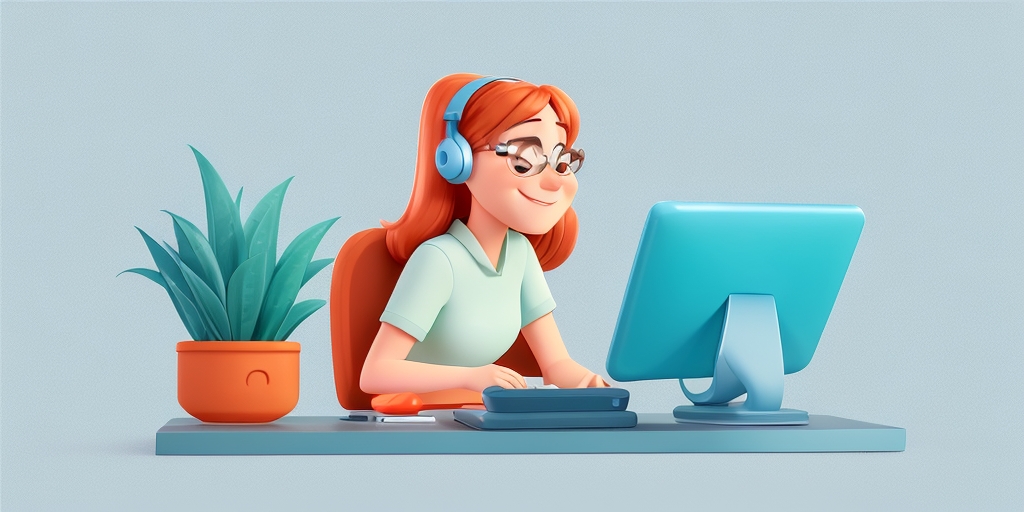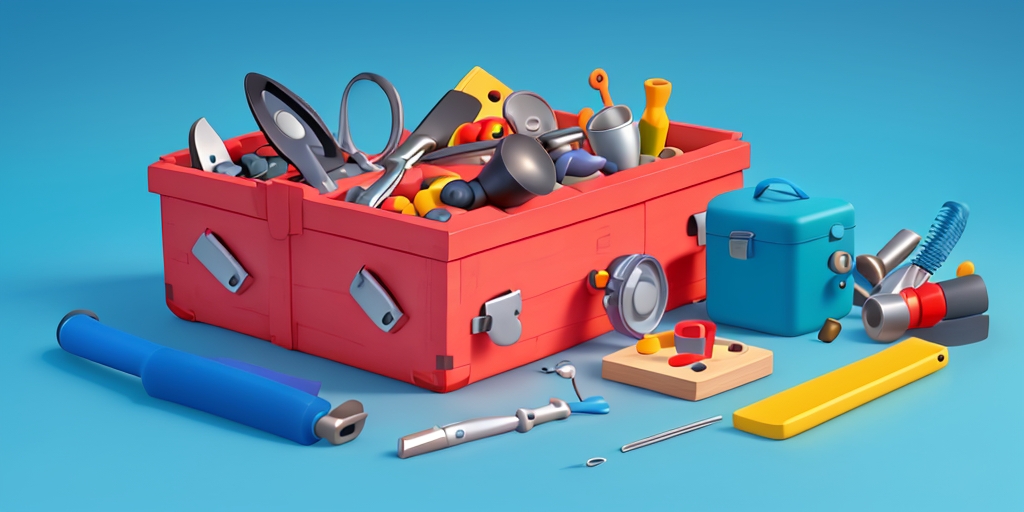A Deep Dive into Usability Testing in UX: Your Comprehensive Resource
I am a creative and analytical person who enjoys problem-solving and finding creative solutions. I am driven by curiosity and a passion for learning, and take initiative to explore and understand new concepts. I am a great communicator and collaborate well with others, and am always looking for opportunities to improve myself and my team.
A Deep Dive into Usability Testing in UX: Your Comprehensive Resource
Understanding the Challenge
Usability testing can often seem like a complex and intimidating concept, especially for those who are just starting their journey in UX design. It involves a myriad of processes, techniques, and tools that can be overwhelming to grasp. But what if we told you that it doesn't have to be this way?
Unveiling the Solution
Our aim is to break down usability testing into simple, understandable components. We'll guide you through its core principles, methods, and tools, making it easier for you to implement in your design process. By the end of this guide, you'll have a clear understanding of usability testing and how it can enhance your UX design.
The Importance of Usability Testing
Usability testing is a key step in UX design. It's not just about making your product look good, but also ensuring it's user-friendly and effective. Here's why:
- Identifies User Struggles: Usability testing helps you understand where users struggle in your product. It uncovers areas that may be confusing or difficult to navigate, allowing you to make necessary improvements.
- Improves User Satisfaction: A product that's easy to use leads to higher user satisfaction. Usability testing ensures your product meets user expectations, leading to a positive user experience.
- Boosts Product Success: A user-friendly product is more likely to be successful. Usability testing helps you create a product that not only meets user needs but also stands out in the market.
Now that we've established the importance of usability testing, you might be wondering, "What exactly is usability testing? How is it conducted in UI/UX design?" Stay tuned as we delve into these questions in the next section.
What is Usability Testing?

Usability testing is a technique used in user-centered interaction design to evaluate a product by testing it on users. This can be seen as an irreplaceable usability practice, since it gives direct input on how real users use the system. It's like a reality check for your product, allowing you to see how it performs in the hands of actual users, not just in theory or in a controlled environment.
Usability Testing in UI/UX Design
In the realm of UI/UX design, usability testing plays a pivotal role. It's the litmus test that shows if your design works in the way you intended. It helps you identify areas of confusion, points of friction, and opportunities for improvement. It's not about making a product that you think is great, but about creating a design that users find intuitive, enjoyable, and effective.
For instance, let's take the example of a popular e-commerce website. They decided to change the design of their checkout process, hoping to make it more streamlined. However, after implementing the changes, they noticed a significant drop in their conversion rate. By conducting usability testing, they discovered that users were confused by the new design and were abandoning their carts at a higher rate. This real-world example underscores the importance of usability testing in UI/UX design.
Real-World Examples of Usability Testing
Usability testing isn't just a theoretical concept, it's a practical tool that's used by companies around the world. Let's look at some more examples to give you a concrete understanding of how it works.
- Google: Google is known for its commitment to usability testing. They conduct rigorous testing for all their products, from search algorithms to user interfaces. This commitment to user experience is a key factor in their success.
- Amazon: Amazon is another company that places a high value on usability testing. They constantly test and tweak their website to ensure it's easy to navigate and use. This focus on user experience has helped them become the world's largest online retailer.
- Apple: Apple's products are renowned for their intuitive design and ease of use. This is no accident - it's the result of extensive usability testing. Apple's commitment to user experience is a major reason for their loyal customer base and market dominance.
As Steve Jobs once said, "Design is not just what it looks like and feels like. Design is how it works." This quote perfectly encapsulates the essence of usability testing. It's not just about aesthetics, it's about functionality and user experience.
Now that we've explored what usability testing is and seen it in action, you might be wondering how you can apply it to your own design process. What are the principles that guide effective usability testing? Stay tuned, as we'll be diving into these principles in the next section.
The Four Principles of Usability Testing

Usability testing is not a random process. It's a structured approach that revolves around four key principles. Understanding these principles can help you conduct effective and efficient tests, ensuring your product is not only user-friendly but also enjoyable and efficient to use.
Successful Task Completion
The first principle of usability testing is successful task completion. This principle focuses on whether users can complete tasks successfully and independently. It's not just about whether they can get from point A to point B, but how easily and intuitively they can do so.
For instance, if you're testing a food delivery app, you might set a task for users to order a pizza from their favorite restaurant. If users struggle to find the restaurant, navigate the menu, or checkout, then there's a usability issue that needs to be addressed.
Performance and Mental State Assessment
The second principle involves assessing users' performance and mental state during task completion. This is where you observe how users interact with your product and how they feel while doing so. Are they frustrated? Confused? Or do they find the process straightforward and enjoyable?
Consider the example of a banking app. If users are constantly worried about security or find the process of transferring money stressful, then there's a clear usability problem. The app should not only be secure but also make users feel secure.
User Enjoyment
The third principle evaluates how much users enjoy using the product. After all, a product that's easy to use but not enjoyable won't keep users coming back. This principle is often assessed through user feedback and surveys.
As Steve Jobs once said, "Design is not just what it looks like and feels like. Design is how it works." This quote perfectly encapsulates the importance of user enjoyment in usability testing.
Problem Identification
The fourth and final principle is about identifying problems and their severity. Not all usability issues are created equal. Some might be minor annoyances, while others could be major roadblocks that prevent users from using your product effectively.
For example, a confusing navigation menu might be a minor issue in a blog, but it could be a major problem in an e-commerce site where it prevents users from finding and buying products.
Now that we've covered the four principles of usability testing, you might be wondering, "How can I apply these principles in my usability tests?" Well, the answer lies in the right tools. Stay tuned as we delve into the various tools available for usability testing in the next section.
Tools for Usability Testing

When it comes to usability testing, having the right tools can make all the difference. There are a plethora of tools available that can assist in conducting usability testing, each with its unique features and benefits. Let's explore some of the most popular ones.
UserTesting
One of the most popular tools for usability testing is UserTesting. This platform offers real-time feedback from users, allowing you to observe their interactions with your product as they happen. This immediate feedback can be invaluable in identifying areas of confusion or frustration, and can help you make necessary adjustments quickly.
For instance, Airbnb uses UserTesting to understand how users interact with their platform. They discovered that users were having difficulty understanding the pricing breakdown, which led them to redesign this feature for better clarity.
TryMyUI
Another useful tool is TryMyUI. This platform provides videos of real users interacting with your product, giving you a firsthand look at their experiences. These videos can offer deep insights into user behavior and can help you identify potential improvements.
For example, the e-commerce giant Amazon uses TryMyUI to test their website's usability. By watching videos of users navigating their site, they were able to identify and fix issues that were causing users to abandon their shopping carts.
Maze
Maze is a user testing platform that allows you to create interactive prototypes and run usability tests. With Maze, you can test your designs before they go live, saving you time and resources in the long run.
Spotify, for instance, uses Maze to test new features before they're released to the public. This allows them to ensure that these features are user-friendly and effective before they're rolled out on a larger scale.
As Steve Jobs once said, "Design is not just what it looks like and feels like. Design is how it works." These tools can help ensure that your design not only looks good, but works well for your users.
Now that we've explored some of the tools you can use for usability testing, you might be wondering how to actually implement this process in your design workflow. Stay tuned, as we'll be diving into that in the next section. How can you incorporate usability testing into your design process to improve the user experience? Keep reading to find out.
The Impact of Usability Testing

Usability testing is not just a process; it's a game-changer. It can significantly influence the success of your product, and here's how.
Improving User Experience
Usability testing is like a bridge between your product and its users. It helps you understand their needs, preferences, and challenges. By identifying and addressing issues, you can greatly enhance the user experience. For instance, let's consider a real-life example of the popular music streaming service, Spotify. They conducted extensive usability testing before launching their redesigned app. The result? A more intuitive and user-friendly interface that led to increased user satisfaction and engagement.
Moreover, a study by the Nielsen Norman Group found that investing in user experience, including usability testing, can yield a return on investment of up to 100%. This clearly shows the significant impact usability testing can have on improving user experience.
Increasing Product Success
A product that is easy to use and meets user needs is more likely to be successful in the market. Usability testing plays a crucial role in this. It helps you identify and fix any usability issues before your product hits the market, thereby increasing its chances of success.
Take the example of Airbnb. They used usability testing to understand the pain points of their users. Based on the insights gained, they made necessary changes to their platform, which resulted in a significant increase in bookings. This is a testament to how usability testing can contribute to product success.
Conclusion: The Power of Usability Testing
In conclusion, usability testing is not just a step in the UX design process; it's a powerful tool that ensures your product meets user needs and expectations. It's like a compass guiding you in the right direction, helping you create a product that not only looks good but also works well.
Remember, a product that is easy to use is a product that people will want to use. So, invest in usability testing, understand your users, improve their experience, and watch your product succeed.



.jpg)
.jpg_nowm_640.jpg)

.jpg_nowm_1260.jpg)
.jpg)